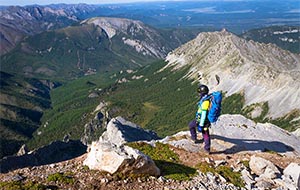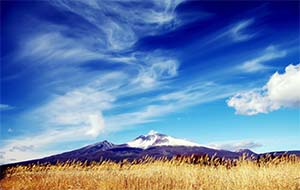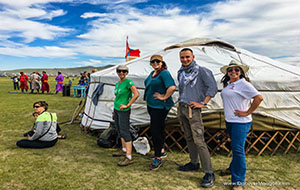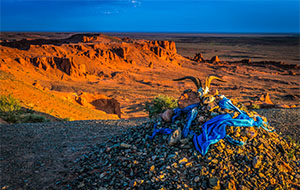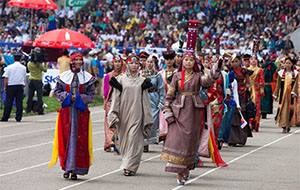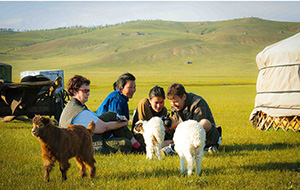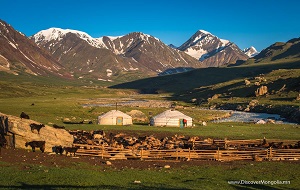Sustainable tourism, a growing trend worldwide, is centered around preserving the natural and cultural integrity of a destination while providing positive experiences for travelers. In the case of Mongolia, sustainable tourism is not just a buzzword but a way of life for the nomadic herders who inhabit the vast steppes, the Gobi Desert, and the Altai Mountains. Let's explore how Mongolia has embraced sustainable tourism and why it's a model for responsible travel.
1. The Power of Yurts: Traditional Nomadic Stays
One of the most authentic ways to experience Mongolia is by staying in a traditional Mongolian ger or yurt. These portable, circular tents have been the homes of nomadic herders for centuries and are now a key component of sustainable tourism. Tourists have the opportunity to immerse themselves in the nomadic lifestyle, staying with local families who welcome them into their ger camps.
These stays not only provide income for the herders but also encourage cultural exchange. Travelers learn about the daily routines, cuisine, and customs of the Mongolian people while forming genuine connections. This type of community-based tourism fosters respect for the local culture and way of life.
2. Wildlife Conservation and Ecotourism
Mongolia boasts diverse wildlife and unique ecosystems, making it a prime destination for ecotourism. The country is home to the Przewalski's horse, the world's only true wild horse, as well as snow leopards, Gobi bears (Mazaalai), and numerous bird species. These creatures thrive in Mongolia's protected areas, and sustainable tourism initiatives contribute to their preservation.
National parks like Gobi Gurvansaikhan and Hustai National Park are committed to wildlife conservation. Visitors can participate in guided tours and learn about the flora and fauna while adhering to strict ethical guidelines. By choosing these destinations and supporting eco-friendly practices, tourists help fund ongoing conservation efforts.
3. Responsible Adventure Tourism
Mongolia's vast landscapes are an adventurer's paradise. From horseback riding across the rolling steppes to trekking in the Altai Mountains, the country offers countless opportunities for outdoor exploration. Sustainable adventure tourism focuses on minimizing the environmental impact while maximizing the benefits for local communities.
Tour operators in Mongolia are increasingly adopting responsible practices. They emphasize Leave No Trace principles, provide eco-friendly camping options, and promote responsible riding practices. By participating in such tours, travelers not only enjoy exhilarating experiences but also contribute to the sustainability of the region.
4. Nomadic Culture Preservation
Mongolia's nomadic culture is an integral part of its identity. Sustainable tourism endeavors to preserve and celebrate this culture. Visitors can attend traditional festivals, witness throat-singing performances, and participate in workshops on traditional crafts like felt-making and dairy processing.
By engaging with these cultural experiences, tourists gain a deeper understanding and appreciation of Mongolia's heritage. Additionally, the income generated from these activities supports local artisans and helps sustain these traditions for future generations.
5. Protecting the Environment
Mongolia's pristine natural environment is its most valuable asset, and sustainable tourism seeks to protect it. This includes minimizing waste, conserving water, and reducing energy consumption. Many eco-friendly ger camps and lodges in Mongolia are beginning to use solar panels and use composting toilets, demonstrating a commitment to responsible resource management.
Moreover, tourists are encouraged to practice responsible trekking and camping by adhering to designated trails and respecting the fragile ecosystems. The "Take nothing but photographs, leave nothing but footprints" mantra is paramount in preserving Mongolia's unspoiled wilderness.
6. Supporting Local Communities
Sustainable tourism in Mongolia has a direct and positive impact on local communities. It generates income for rural families, reduces urban migration, and supports local businesses. Many tour operators partner with community-based initiatives, ensuring that a portion of the profits is reinvested in education, healthcare, and infrastructure in these remote areas.
By choosing sustainable tourism options and purchasing locally made handicrafts, travelers contribute to the economic development of Mongolia's rural communities, ultimately improving the quality of life for its residents.
Conclusion
Mongolia, with its vast and untouched landscapes, is a remarkable example of how sustainable tourism can thrive when it harmonizes with local culture and nature. The nation's commitment to preserving its nomadic traditions, wildlife, and environment sets an inspiring precedent for responsible travel.
As travelers, we hold the power to make choices that can positively impact the places we visit. By embracing sustainable tourism practices in Mongolia and elsewhere, we not only have the privilege of experiencing the world in a meaningful way but also play a crucial role in safeguarding our planet's most precious treasures for generations to come. So, if you're yearning for an adventure that encompasses both natural beauty and cultural authenticity, Mongolia is waiting to welcome you with open arms and a sustainable approach to travel.


















